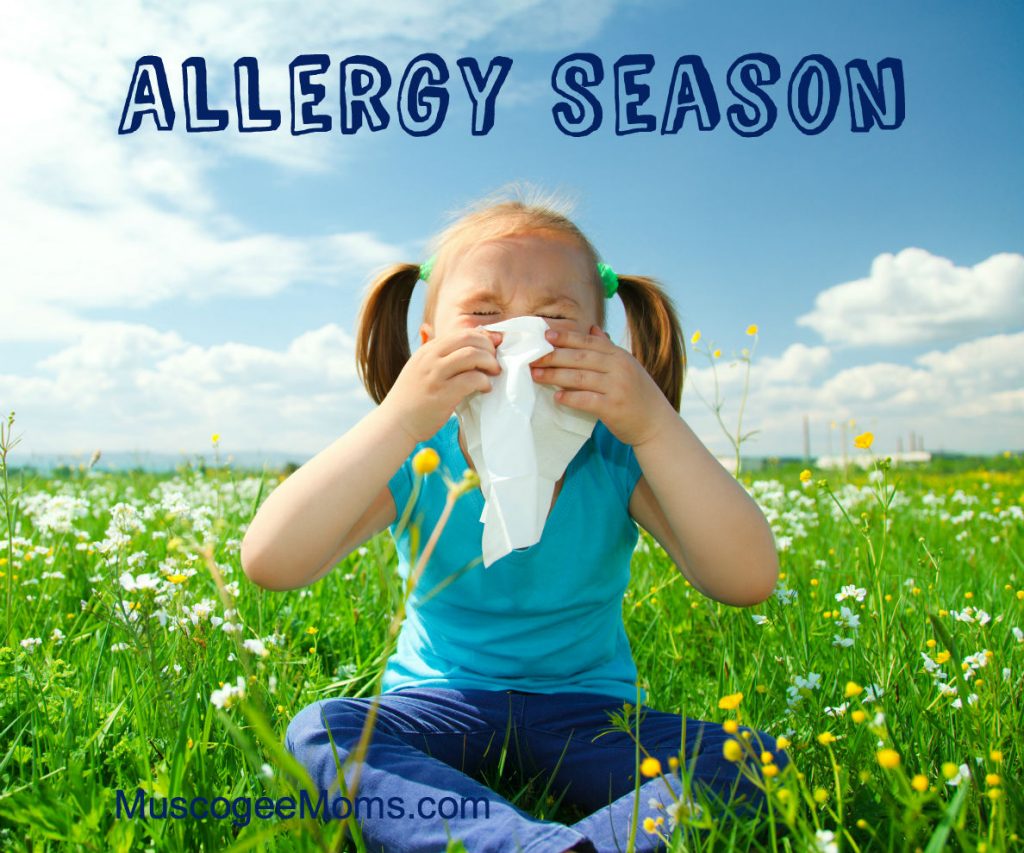Spring is here, and the tree and grass pollens are filling the air. For some children, these pollens are the cause of spring allergies.
Allergy symptoms happen when your child’s immune system mistakenly attacks a harmless substance like dust or pollen by releasing a chemical such as histamine.
The difference between a cold or allergies
Allergy symptoms are no fun. These symptoms can be very similar to classic cold symptoms, which is why it can sometimes be difficult to tell if your child has a cold or is suffering from allergies. Here are some key differences between the two:
- Both colds and allergies can cause a stuffy/runny nose, and both can cause a sore throat.
- The symptoms of a cold appear gradually, while an allergy attack can occur suddenly.
- A cold virus may cause your child to experience body aches and a fever. Allergies will never cause either of these.
- An allergy attack often will cause your child’s eyes to become itchy and watery.
- A cold typically only lasts for about 14 days, while allergies can go on for months.
Tips to allergy-proof your home
Here are some spring cleaning tips you can use to make your house an allergy-free zone. Some steps may be more effective than others, depending on the type of allergy you have.
Entire House:
- Use a damp cloth to dust the surfaces in your home, including the tops of doors, window sills, and baseboards.
- Maintain your home’s temperature between 68 F (20 C) and 72 F (22 C) and keep relative humidity no higher than 50 percent.
- Use a HEPA filter equipped with vacuum and a steam cleaner to remove dust and pollen from the carpet.
- Keep pollen out by having everyone take off their shoes before coming inside.
- Don’t open the windows to let the house ‘air out.” The window screens won’t keep out the mold spores and pollen.
- Use a dehumidifier to reduce dampness and clean it once a week.
- Check the pollen count and plan your day accordingly.
- Don’t allow smoking anywhere inside your house.
Bedroom:
- Consider encasing your mattress and pillows in covers that are impenetrable to dust mites.
- Wash sheets and pillow cases every week in water that is 130 degrees F or more to kill dust mites. Remove comforters, unless they can be washed on a regular basis.
- Store children’s toys, games and stuffed animals in plastic bins.
Bathroom:
- Towel-dry the tub and enclosure after use. Scrub mold from tub, shower and faucets with bleach.
- Discard or wash moldy shower curtains and bath mats.
- Use washable rugs.
Kitchen:
- Wash dishes daily. Scrub the sink and faucets to remove mold and food debris.
- Place garbage in a can with an insect-proof lid and empty trash daily. Keeping the kitchen free of food crumbs will help reduce the chance you will have rodents or cockroaches.
Living Room:
- If you are installing new flooring, replace carpet with hardwood or laminate flooring.
- Consider replacing upholstered sofas and chairs with furniture made of leather, wood, metal or plastic.
- Wash curtains and consider replacing blinds with roller-type shades.
- Remove items that collect dust, such as knickknacks, tabletop ornaments, books and magazines.
- If your child has symptoms for more than 14 days, make an appointment for her to see the pediatrician. There are several well-tested, safe medications that your child’s doctor may prescribe to alleviate the symptoms of spring allergies.
- If it turns out your child has allergies, her doctor will provide you with a plan to how to keep her allergies under control and alleviate the symptoms.
Source: MayoClinic.com



